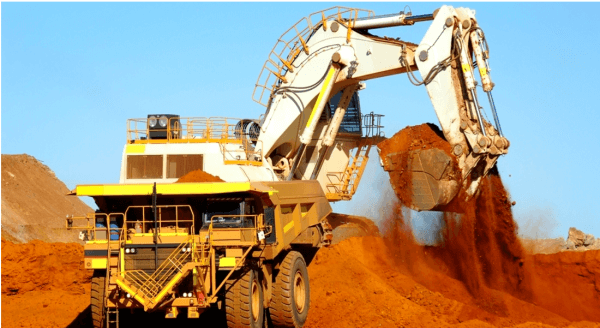The impact of adapting Automated Haulage Systems to a typical open pit mine
In this article, we explore the impact of adapting Automated Haulage Systems (AHS) to a typical open pit mine considering the initial investment, ramp-up delays, impacts of operating costs, productivities, ramp layout, and even geotechnical changes resulting from the use of AHS.
AMC is working with Mining Technicians Group Australia (MTGA) to evaluate AHS for medium to large scale open pit mining projects. MTGA is a specialist services provider fitting AHS capability to various mining dump trucks. AMC provides a number of complimentary services to evaluate the viability of the initial capital cost of an AHS installation or upgrade. The AMC team provides mining cost estimation derived from first principles using its proprietary OPMincost model that can be used to estimate or re-estimate mining operating costs both with and without AHS. Using the revised operating costs and productivity changes AMC and MTGA can re-evaluate open pit optimizations and develop revised pit designs based on the new input parameters.
MTGA have undertaken a number of cost-benefit analyses evaluating AHS potential, site operational readiness exercises to assist projects in establishing the potential for AHS implementation, as well as outlining site future state requirements for a successful AHS deployment.
AHS has been successfully installed at six mine sites globally covering a fleet of about 150 trucks and consists of the following components:
- Proprietary electronic devices fitted to individual haulage units.
- GPS units fitted to all other interacting vehicles.
- Location sensors on digging units.
- Communication network with wireless connectivity to all mining areas.
- Ancillary equipment such as repeaters, power supplies, CCTV, perimeter barriers /sensors.
- Controlling software that directs, tracks and monitors vehicle movements in the autonomous zone.
- Control room.
- Technical staff – in the control room and field environments.
Key safety features of the system include GPS location monitoring of all vehicles in the autonomous zone to manage and avoid vehicular interactions and object detection devices (radar and LIDAR) programmed to prevent the haulage units to colliding with any objects and vehicles. Systems can incorporate video capture for live interaction or data collection.
Only dedicated AHS-kitted vehicles operate within the autonomous operating zone, which may be the entire mining area, including waste dumps and ROM pads, or a well-defined section of a mining area or trial pit.
Dump truck drivers are often seen as the human face of mining, and a cost reduction benefit of AHS implementation is fewer operators onsite. However, counter argument is that AHS is another step (albeit a large one) in the continuous technological improvement of the mining industry, no different to the development of large hydraulic excavators, ultra-class trucks, electronic detonators, CIL, remote operations centers and the significant automation now applied to fixed plant onsite. The continuous advancement is needed to enable the exploitation of deeper and lower grade ores and as a response to varying metal prices.
AHS has the potential to deliver lower cost and higher safety standards to modern mining projects. Rio Tinto reported a 13% reduction in load and haul operating costs due to the implementation of AHS . AHS is also attractive in developing countries due to the significant level of control able to be applied from a remote (head) office if local employment is a key social enabler of mining development, then these savings are minimal so no changes in employment numbers are required.
A significant change in mining operating costs would typically prompt a review of the overall mining project. AMC would review the final pit design by developing an updated pit optimization. Changes to key inputs to the pit optimization resulting from the selection of AHS include a reduced hauling cost and potentially, allowances for changes to haul road geometry. Utilizing autonomous trucks could lead to a review of road widths and grades.
The high precision of autonomous trucks may permit a reduction in haul road running surface widths, and the additional focus on road maintenance and the removal of human errors such as over speed and poor gear selection (mechanical trucks) may permit steeper ramp grades. The benefits of these factors can only be tested in pit optimization sensitivity studies. AMC, MTGA and the mine owners would be intricately involved in such a study.
Changes to road widths do not always translate to steeper overall pit wall angles and therefore a lower mine stripping ratio. AMC’s geotechnical engineers would review the pit design parameters considering both local and overall wall stability. Most open pit layouts will be improved with narrower ramps, but the impact must be properly considered over the entire pit geometry with a thorough geotechnical analysis. The catch bench berms can be re-evaluated with reduced overall human in-pit time, although slope angle safety factors are unlikely to change.
Once a revised mining plan is established, mining costs should also be reviewed. Using OPMincost AMC can model the cost impacts of using AHS. The costs would be modelled considering the expected increase in truck operating hours and in truck productivity. Direct operating costs will be adjusted for factors including:
- Reduced number of operators,
- Reduced allowance for accident damage,
- Changes to truck travel speeds,
- Increased tyre life,
- Similar road maintenance and staff training costs,
- Added costs of maintaining the AHS system,
- Reduction in employee on-costs, including accommodation and flights,
- Reduced cost allowance for engine and drive train overhauls.
Capital costs are also adjusted to allow for the initial AHS installation costs, reduced truck numbers including an analysis of the truck replacement schedule, reduced camp costs and periodic additions to the AHS system as the mine develops. The model would be set up to include a revised ramp up phase where the AHS system is implemented, which is generally expected to take longer to achieve 100% of production capacity compared to a conventional open pit start up schedule. The adaption delay differential is expected to be significantly reduced utilising experienced consulting groups who have previously managed AHS projects on operating mine sites.
Improvements in truck productivity can have a variety of benefits to a mine site. Moving the same amount of material at a lower cost with reduced truck numbers is an obvious advantage. Alternatively, the operation may be able to produce more ore supporting increased sales or project expansion. Lower costs may allow for an increase in the overall pit size and lead to an increase in reserves. Each of these cases should be evaluated for capital and operating costs and the impact on the mine schedule, providing the basis for a sound investment decision. Evaluations would typically be in terms of net present value and cost. AMC and MTGA can provide such an overall solution.
Subscribe for the latest news & events
Contact Details
Useful Links
News & Insights


